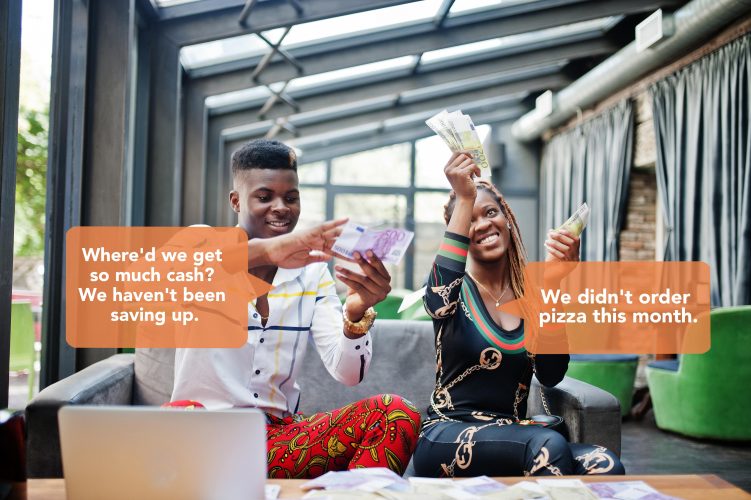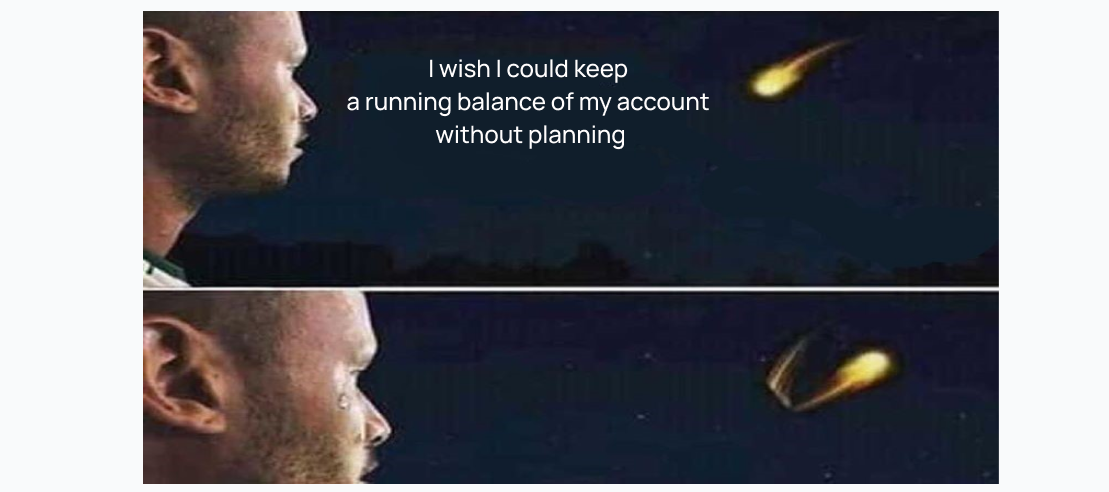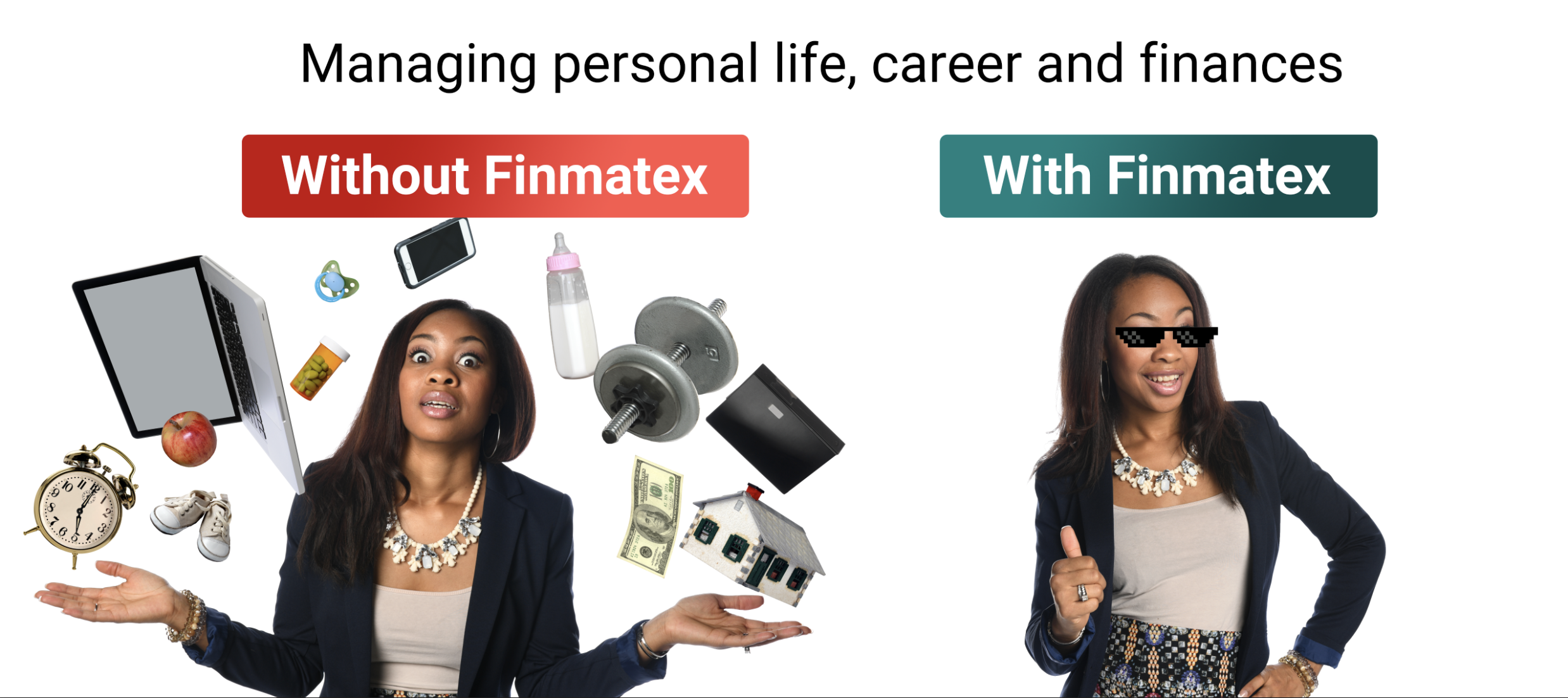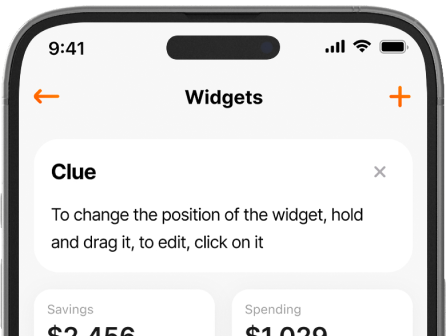You need some new sneakers, so you go online and find a pair you like. The basic black color costs $80, but for $120 you could get a much cooler limited-edition color. You consider buying the upgrade, but then again, with that extra $40.00 you could get better shoes, or go out for a meal, or invest in the stock market… As you consider the possibilities, spending $40.00 on a nicer color suddenly seems like less of a good idea. The “opportunity cost,” or the things you’d be giving up to buy the fancy shoes, is too high—you have better uses for the money.
Opportunity cost pops up whenever we have to make decisions about money or time, so it’s extremely relevant to your personal finances! Spending, saving, and getting credit are all pretty straightforward on their own, but getting into the habit of looking for less-obvious costs could save you quite a bit.
What Exactly is Opportunity Cost?

You don’t need to take an economics class to know that life is full of trade-offs. If you choose to do one thing with your limited money and/or time, you essentially opt to not do any of the other things available to you, and that’s the opportunity cost in a nutshell: the value of what you passed up.
For example, if you can only choose pepperoni or mushrooms as a pizza topping, your opportunity cost is whichever one you don’t pick. You have to give up mushrooms to get pepperoni and vice versa. If you would rate pepperoni as a five and mushrooms as an eight on a scale of one to ten picking pepperoni would carry an opportunity cost of three points of enjoyment. You’re also giving up five points of enjoyment by not choosing the pepperoni, but that’s a sacrifice you have to make if you want to be better off.
Bringing money into it makes the costs even clearer. Let’s say you’re planning a party and have a $100 budget to spend on bottles of soda and pizzas. One soda costs $2, and one pizza costs $20.
In this situation, the opportunity cost of buying a pizza is ten sodas, while the opportunity cost of buying one soda is 1/10 of a pizza. There’s probably an ideal number of sodas and pizzas to get, but you can never exceed $100, so you have to adjust your spending within those constraints.
Your personal financial decisions are simply a more complex version of the soda-pizza problem. You face constraints (the money you have available) and have to decide which applications of your money (combinations of sodas and pizzas) are the best for you.
Likewise, you have just two main choices: spend or save. If you choose to spend, the opportunity cost is the money you could have earned by saving or investing. If you choose to save, the opportunity cost is whatever you would have bought right now. Finding that equilibrium level where you can consume enough now and save enough for later is ultimately what personal finance is all about!
Opportunity Cost and Spending

The core idea of opportunity cost isn’t too hard to wrap your head around: spending money on something will lead to you not spending it on something else. It’s easy enough to consider opportunity costs when making one-time small or medium purchases—like a new pair of shoes—but recurring or large purchases can trick us into ignoring some opportunity costs.
Recurring Purchases
The opportunity cost of a $10 fast food meal is fairly small—a few groceries, a small amount of future savings, part of a new shirt, etc.—but if you spend that $10 four times a week, you’re now looking at $40 a week, $160 a month, and $1720 a year.
Rather than thinking about what you could get for $10 today, you can make more informed spending decisions by considering what you could buy every week, month, or year with the money if you didn’t spend it on fast food. Sometimes, the value of a quick and easy meal is absolutely worth it, but when you think about the long-term opportunity costs, you might opt to pack a lunch a few times a week instead!
Large Purchases
If you’re buying a new car for, say, $30,000, the way you’re thinking about money has probably changed a bit. You might see a slightly nicer car for $33,000 and think, “Hey, it’s not that much more!” or perhaps ignore the $1,000 discount you could get by removing some little-used optional features. Thinking about the opportunity cost in those numbers, though, can change how you see them: would you really spend $3,000 on a whim or pass up $1,000 because of a few extras?
You might even ask yourself if you need a new car at all! Could you save money by buying used? What could you do with that cash? Considering large purchases through the lens of opportunity cost can help snap you back to a reality where you have a more objective view of your money.
How You Spend
That’s right—there are even opportunity costs in how you spend your money! Let’s say you have access to a debit card and a credit card. The debit card gives you 0% rewards, while the credit card gives you 2%, meaning that every time you spend money using the debit card, you’re missing out on the chance to earn 2%.
That doesn’t necessarily mean you should always use a credit card, though. If you know that you tend to overspend with credit, for example, you’ll realize that by not using a debit card, you might go into debt and have to pay interest that far outweighs the rewards you’ll get.
Time is also a factor in your spending decisions. You can often get a better deal by shopping around and comparing prices, but if you have better ways to use your time than looking for sales, you may be willing to give up the monetary savings. The opportunity cost of saving time is the money you would have saved, while the opportunity cost of finding a sale is the time you have to spend doing it.
There are many other examples of situations where considering opportunity costs could help lead you to better spending decisions, but you don’t need to overanalyze every single purchase. The power here lies in simply creating the habit of stopping to think, if even for just a few seconds, about what else you could do.
Opportunity Cost and Saving

Saving in Cash
Let’s say you keep $100,000 savings in cash, hidden in a fireproof safe. This gets you a 0% interest rate, meaning you’ll always have exactly the number of dollars you put in. In real terms, though, those dollars will get less valuable over time due to inflation, losing you about 3% per year on average. To put that into perspective, $100,000 would be worth $73,742 in ten years, costing you over $26,000.
Using a Savings Account
If saving in cash is your only option, there’s no opportunity cost to doing it. If you find a savings account paying 2% interest, however, you’re suddenly missing out on that 2% by not changing. With your inflation loss reduced to 1%, $100,000 would be worth $90,500. That’s $17,000 more than you’d get by keeping your savings in cash, making your opportunity cost pretty hefty!
Investing in the Stock Market
But that’s probably not your only option either—it’s actually possible to beat inflation by investing in the stock market, which averages about 10% annual returns. Even with inflation, that means you’re still gaining 7%. $100,000 at 7% for 10 years gets you… wait for it… $196,715 dollars (at today’s value). The opportunity cost of choosing a savings account, then, is $106,000. Choosing cash would increase that to $123,000.
This is where the real power of opportunity cost starts to become obvious—you can see where you’re leaving money on the table. However, there are still some caveats!
The stock market isn’t risk-free, meaning that it, too, carries an opportunity cost compared to savings accounts. Especially in the short term, you can easily lose money instead of gaining it, and you’ll also have to spend some time learning how to set up an effective investment plan.
That’s why it’s generally considered a good idea to invest in a lot of different types of stocks and keep some of your money in safer instruments, like bonds and savings accounts.
Knowing about the opportunity costs of these potential returns is a big part of making good spending and saving decisions. Sometimes, spending your money today is the right decision. You might decide that the mental and social benefits of a night out with friends are more valuable than anything else you could do with $50, and you’d probably be correct.
However, if you start going out and spending $50 multiple nights a week, you might start to add up how much you could get in a few years if you invested that money instead. Saving $250 a month for 5 years would put you at almost $18,000 in savings, with the interest paid amounting to about $3,000. Knowing that, you might cut your night out to once a week and decide to save the rest.
Opportunity Cost, Credit, and Loans

To Borrow Or Not to Borrow?
The upfront cost of taking out a loan is pretty clear: you have to pay it back with interest, depriving you of that money in the future. However, you’re also missing out on the other things you could be doing with that money in the future, whether that’s spending it or putting it into a savings account to earn money. That’s why taking on debt is always something to consider carefully, as you’re essentially charging a present expense to your future self, decreasing your future options.
However, there are also opportunity costs to not taking out loans. If you need student loans to attend university, then foregoing those loans would come at the cost of university education. Assuming the education raises your future wages, the value of that education could end up being more than the cost of the loan.
Mortgages and Opportunity Cost
Mortgages can also often be good deals, but, as with every loan, you should look at your payment options through the lens of opportunity cost. Let’s say you have a $200,000 mortgage loan. If you choose a 30-year fixed mortgage at 3% interest, you’ll pay around $300,000 over the next 30 years. If you choose a 15-year loan at 2.5% instead, however, you’ll only pay $240,000.
So, the opportunity cost of the 30-year mortgage is $60,000, since that’s the difference in what you pay, right? Well, what if you invested that money instead? $60,000 invested for 15 years at 7% growth would turn into $165,000, and if that’s what you’d otherwise do, that’s the real cost of the 30-year mortgage.
Of course, you could also spend that $60,000 on a boat, or a lot of little things, but the principle is the same: that 30-year mortgage costs more than you think. Just to keep things complicated, though, you’ll also have to weigh this against the fact that your mortgage payments will be higher for the first 15 years, which may end up costing you in the medium term.
Credit Cards
The same holds true for credit card debt. It’s almost always a bad deal, with interest rates easily exceeding 20% and pushing your opportunity costs up fast. Nonetheless, they have their place, especially in emergency situations, when the value of spending your money right now is massively higher than potential future gains.
Opportunity Costs are Everywhere
Should you have a budget? Probably. Should you have a budget that requires you to spend a long time planning and manually entering information? Maybe, but first, you might want to think about the opportunity cost of that. Do you have a higher-value use for the hours you spend on budgeting? Could you be earning more money? Enjoying your life? If the opportunity cost for those hours spent budgeting is too high, you’re a lot less likely to do it consistently and might be better off with a simpler budget plan.
As with personal finance, opportunity costs aren’t just about spending less and saving more—they’re about empowering you to make the best possible decisions so you can spend more time living your life and less worrying about money. Always asking what the costs eventually mean always knowing what the costs are, which will ultimately make your decisions a lot easier.








